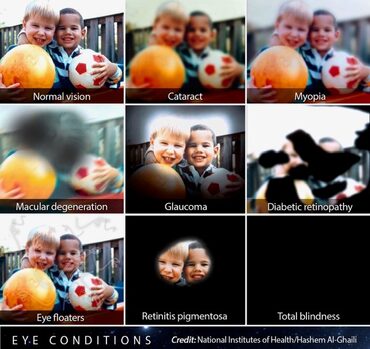
1) When a fully sighted person is looking at something that is 200 feet away and sees it clearly, that is 20/20 vision. When someone is diagnosed legally blind, that means that the person with the diagnosis needs to be 20 feet or closer to it to see it or to kind of see it.
2) Never assume someone’s level of vision, just know that it is far worse than yours.
3) Not everyone who identifies as blind is totally blind. According to the American Foundation for the Blind,15% of our blind community sees nothing at all. The rest of us have varying degrees of vision remaining, with the vision we have being limited and often unreliable.
4) Vision loss is a non-apparent disability. You cannot always tell if someone is blind. If someone tells you they are blind or legally blind, believe us and take it as a compliment that we trusted you to share it with. For some of us experiencing vision loss, this is a very big deal.
5) Not everyone who is blind uses a mobility device to navigate. Some of us may use a white cane, and there are many different types of canes available to choose from. Some of us choose to have a guide dog, while others prefer to rely on their remaining vision. Some of us want to travel by sighted guide and others just prefer to follow. We all have different preferences because we are all different from each other.
No two people diagnosed legally blind sees exactly the same. There are many different eye conditions effecting different parts of the eye(s). None of our experiences with vision loss is the same because we do not all have the same support system at home, in school or the community. We all do not have the financials to purchase the tools and devices that make life easier. We all do not have the opportunity to received rehabilitation training and we are all at a different acceptance in our journey.
If you want to know about a person and what they can or cannot see, if you have questions or are curious, please ask the person you are curious about. This way you gain accurate information about that person and what they’re experiencing.
If you would like to learn about what kinds of eye conditions their are here is a link.
Different types of eye conditions
